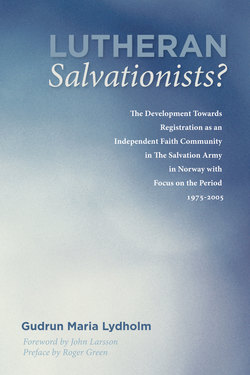Описание книги
The idea of a state religion is seldom connected to religious freedom and liberal, modern, and democratic states. However, such a situation existed in Norway until 2012, when the Lutheran Church was the state church of Norway. A large majority of the population belonged to the church, even though the percentage in 2013 had fallen to well over seventy-five. The relationship between the church and minority religious movements demanded adaptation and compromises from the minority churches. The Salvation Army's enculturation and accommodation during its 128-year history in Norway illustrates such a situation. The book examines how The Salvation Army accommodated itself both doctrinally as well as practically to the situation of a dominant state church. The study reveals such a close affiliation of Salvationists to the Norwegian Church as a state institution, that it raises the question of whether a concept of civil religion was implicitly present in Salvationists' view of the state church and their own adherence to the church. This situation also raises the question of what constitutes a real church. The book indicates the tension between Lutheran and Salvationist ecclesiology as well as the influence from the Lutheran Church.
